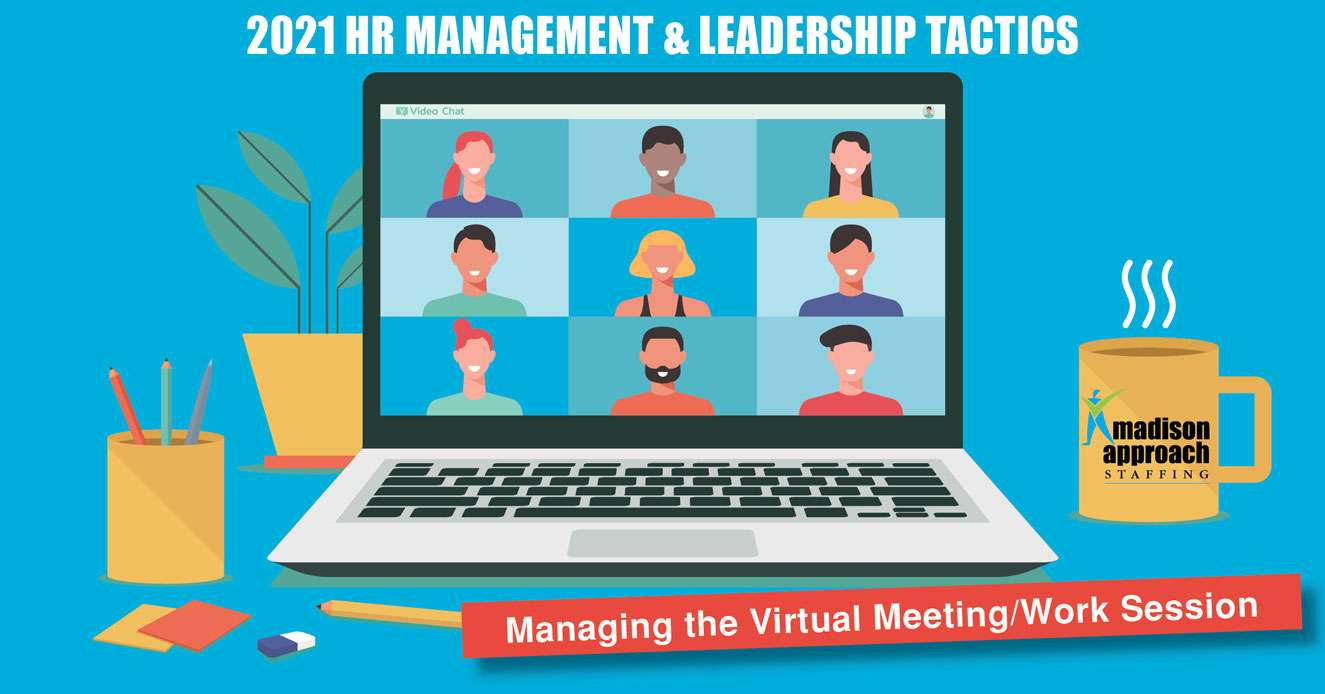
- Start by setting an example: Even though we are working from home, we are getting paid to do a job which means being professional, being on-time, being accountable, and not making excuses. If we as managers are repeatedly ignoring the norms of workplace behavior, our teams will follow suit.
- Set a meeting agenda and timeframe: Virtual meetings should be treated the same as an in-person office meeting. An agenda should be sent out in advance with set time parameters. It should have a purpose and not be used as a chance to “check-up” on people to make sure they are working, as that will cause resentment (more on this later!). Notes should be taken and recapped with definitive action steps and staff assignments.
- Set Expectations for being on-camera for virtual meetings: There has been a lot of debate on whether requiring people to be on-camera is fair. This issue has been argued from multiple angles from the fact that women typically spend more time on their hair and make-up than men, to sensitivity of home environment. There is no doubt that being able read body language and facial expression is helpful in communication, so requiring people to turn their video on is not unreasonable. Remember that when people come to in-person office meetings they are expected to get dressed, drive to work, and show up. Why is it a problem for an online meeting? Managers need to be clear in communicating expectations and be confident that the request is not out of line. Just be sure that everyone has the technology to meet expectations.
- Accommodate some socializing: Just as there would be some socializing in the office, there should be space allocated for chitchat online, as long as it doesn’t go on too long or descend into gossip. We want our teams to bond and like each other and it’s human nature to be friendly.
- The Silent Lurkers: Be careful of people who stay silent during the actual meeting, and then hold what is called “the meeting after the meeting” where they let it all hang out. Make sure to call on people and ask for their input during the scheduled meeting and create a respectful environment where people feel heard and have a chance to contribute.
- Recording Meetings: Give everyone the courtesy of notifying them that the meeting is being recorded and for what purpose. Recording meetings helps people pay attention so they don’t have to focus on taking detailed notes, but it can be a deterrent to speaking freely if not handled correctly. Transcribe the meeting and distribute recaps so that staff trust the recordings are being used for the purpose of keeping a project on track and accurately recording details for those who couldn’t attend.
- Private Communication: If a staff member is struggling with getting their work done, the virtual technology, and missing deadlines, a manager must do as they always would—have a private conversation to make a course correction. Making accommodations is one thing, but be careful it doesn’t transition into “making excuses”. That is not good for the employee or the company and could affect their future career and review.
The importance of establishing clear expectations and being fair and consistent with your team are always important, no matter what staffing model your organization uses. Leadership is a difficult balancing act between holding staff accountable and being compassionate, but in these times your staff needs strong direction now more than ever. Lead on!
